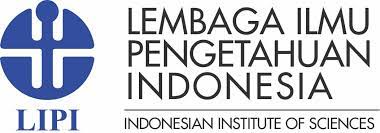PENGEMBANGAN MEDIA PEMBELAJARAN BAHASA ARAB DI KELAS BILINGUAL SMA TAKHASUS AL-QUR’AN WONOSOBO
DOI:
https://doi.org/10.53866/aljabiri.v2i2.548Keywords:
Language Skills, Arabic Language Learning, Bilingual ClassAbstract
SMA Takhassus Al-Qur’an is a pesantren-based school that has a language program called the bilingual class to create a language environment (al biiah al lughowiyah). The learning process emphasizes mastering the basic knowledge of Arabic, then applying and developing it. The aim of this research is to describe the implementation of the bilingual class program, and to identify the supporting and inhibiting factors. This research is descriptive qualitative in nature. Observation, interviews, and documentation are the data collection techniques used.
The results of this research indicate that the Arabic day program is an additional activity carried out outside the classroom to help students understand and get used to speaking Arabic. The implementation of the bilingual class program begins with three stages: planning the preparation of learning materials based on students' needs in the form of vocabulary books. The implementation of the bilingual class program is carried out with a different learning concept in the classroom, where learning materials are packaged in a simple manner, and the teaching methods and models are innovative, creative, and enjoyable. Then, evaluations are conducted before (Pretest) and after activities (Post Test) in the form of basic language skills questions. The supporting factors of the bilingual class program include a more enjoyable atmosphere, simple materials, and more innovative learning methods. The inhibiting factors are the lack of learning facilities and limited implementation time.
References
Amrulloh, A. V., Zuhriyah, L., Muntadziroh, T. N., Rahayu, S., Fatkhurrohman, F., & Aqidho, Y. A. (2023). Analysis Of The Letter Jar In Surah Al-Hujurat And Its Learning Media. AJIRSS: Asian Journal of Innovative Research in Social Science, 2(1), 1-18.
Al-Musannif, (, Jurnal, :, Islam, P., Keguruan, D., Firdausia, A., Asrori, I., & Ahsanuddin, M. (2020). Al-Musannif: Journal Of Islamic Education And Teacher Training Pengembangan Media Pembelajaran Bahasa Arab Berbasis Web Offline Pada Siswa Kelas X Sma Negeri 8 Malang. 2(2), 89. Https://Jurnal.Mtsddicilellang.Sch.Id/Index.Php/Al-Musannif
Bambang Sugianto. (2014). Optimalisasi Penerapan Kelas Bilingual Menuju Pembelajaran Efektif Di Smp Negeri 1 Dukun Gresik. Jurnal Kebijakan Dan Pengembangan Pendidikan, 2(1), 35–41.
Dewi, T. A. (2016). Implementasi Kelas Bilingual Di Smp Negeri 1 Baturetno Wonogiri. Spektrum Analisis Kebijakan Pendidikan, 5(2), 161–172.
Faizun, A., & Sunarko, A. (2023). Konsep Manajemen Mutu Pondok Pesantren Berdasarkan Buku Total Quality Management In Education Karya Edward Sallis. Spesifik: Jurnal Pendidikan Dan Pembelajaran, 1(1).
Fatonah, I. A., Azizah, F., Salsabila, M., Rohyani, I., Sunarko, A., Adz-Dzakiyah, N., & Rohman, F. (2024). Pembelajaran Nahwu Berbasis Kurikulum Merdeka Di Madrasah Aliyah Negeri. SPESIFIK: Jurnal Pendidikan dan Pembelajaran, 2(2), 83-94.
Firdausia, A., Asrori, I., & Ahsanuddin, M. (2020). Pengembangan Media Pembelajaran Bahasa Arab Berbasis Web Offline Pada Siswa Kelas X Sma Negeri 8 Malang. Al-Musannif, 2(2), 89–100. Https://Doi.Org/10.56324/Al-Musannif.V2i2.39
Hana, L. N., Sunarko, A., & Rahman, R. A. (2022). Penggunaan Media Film Animasi Untuk Meningkatkan Penguasaan Kosakata Bahasa Arab. Jurnal Al-Qalam: Jurnal Kependidikan, 23(1), 8-14.
Harahap, N. (2020). Penelitian Kualitatif.
Hasan, A. A., & Baroroh, U. (2020). Pengembangan Media Pembelajaran Bahasa Arab Melalui Aplikasi Videoscribe Dalam Meningkatkan Motivasi Belajar Siswa. لسـانـنـا (Lisanuna): Jurnal Ilmu Bahasa Arab Dan Pembelajarannya, 9(2), 140–155.
Hasan, S. H. (2008). Evaluasi Pengembangan Ktsp: Suatu Kajian Konseptual. Inovasi Kurikulum, 6(2), 1–29.
Hutauruk, A. F., Subakti, H., Simarmata, J., Soputra, D., Lestari, H., Al Haddar, G., Da’i, M., Purba, S., Khalik, M. F., & Cahyaningrum, V. D. (2022). Media Pembelajaran Dan Tik.
Khasanah, N. F., Rosid, A., Ulya, M. S., Farkhah, T., & Sunarko, A. (2023). Mubtada Khobar In Surah Saba'and Learning Media For Beginners. AJIRSS: Asian Journal of Innovative Research in Social Science, 2(3), 261-273.
Khairunnisa, K., & Ahkas, A. W. (2023). The Development of Arabic Language Learning Media Based on Google Site for Class VIII Students of Madrasah Tsanawiyah Negeri 2 Deli Serdang. Lisanan Arabiya: Jurnal Pendidikan Bahasa Arab, 7(1), 75-89.
Luqni, L. A., & Wuryandini, E. (2023). Implementasi Program Bilingual Di Mts Salafiyah Hidayatul Athfal Pekalongan. Didaktik: Jurnal Ilmiah Pgsd Stkip Subang, 9(5), 265–279.
Rukajat, A. (2018). Pendekatan Penelitian Kualitatif (Qualitative Research Approach). Deepublish.
Setiawati, G. A. D., & Arsana, P. A. A. (2018). Pengaruh Motivasi Belajar Dan Gender Terhadap Prestasi Belajar Ipa Siswa Kelas Bilingual Smp (Slub) Saraswati 1 Denpasar. Proceeding Biology Education Conference, 15, 173–179.
Sugianto, B. (2014). Optimalisasi Penerapan Kelas Bilingual Menuju Pembelajaran Efektif Di Smp Negeri 1 Dukun Gresik. Jurnal Kebijakan Dan Pengembangan Pendidikan, 2(1).
Sunarko, A., & Hafsah, N. (2018). Media Realia Dalam Meningkatkan Penguasaan Mufradāt Di Mts Ma’arif Tembarak Temanggung. Lisanan Arabiya: Jurnal Pendidikan Bahasa Arab, 2(1), 121-140.
Wahyuningsih, A. (2021). Konsep Dasar Tik Dan Pendidikan Tik. Universitas Muhammadiyah Sidoarjo.
Zubaidillah, M. H., & Hasan, H. (2019). Pengaruh Media Kartu Bergambar (Flash Card) Terhadap Penguasaan Kosakata Bahasa Arab. Al Mi’yar: Jurnal Ilmiah Pembelajaran Bahasa Arab Dan Kebahasaaraban, 2(1), 41–56.
Downloads
Published
Issue
Section
License
Copyright (c) 2023 Ajeng Putri Bunga, Eka Saputri Alfi Nurjanah, Arum Dewi Jayanti, Dimas Putra Maulana, Isma Idatunnisa, Fina Qurrotul Aini, Lilik Rochmad Nurcholisho

This work is licensed under a Creative Commons Attribution-ShareAlike 4.0 International License.

















